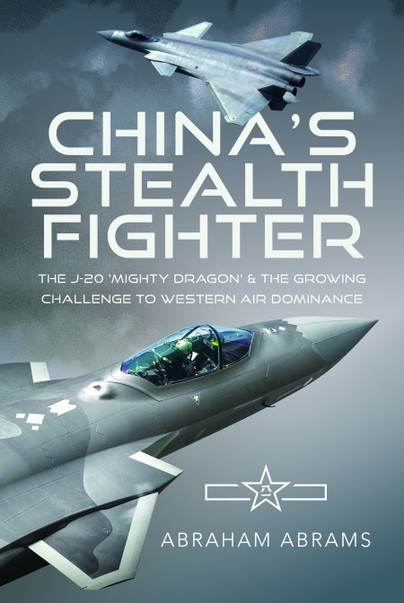China's Stealth Fighter (Hardback)
The J-20 'Mighty Dragon' and the Growing Challenge to Western Air Dominance
Imprint: Air World
Pages: 296
Illustrations: 32 colour illustrations
ISBN: 9781036105501
Published: 29th November 2024
(click here for international delivery rates)
Order within the next 2 hours, 13 minutes to get your order processed the next working day!
Need a currency converter? Check XE.com for live rates
| Other formats available | Price |
|---|---|
| China's Stealth Fighter ePub (3.7 MB) Add to Basket | £14.99 |
The United States and Soviet Union began a race to develop the first and most capable fifth generation stealth fighters in the late 1970s. The Cold War’s end, however, was followed by both a near total collapse of Russian efforts and major cuts and delays to American programs. This provided an opening for a rising and fast modernising Chinese defence industry to kick off its own ambitious program to produce a world leading fighter jet with next generation capabilities. Once unveiled, the program came to be seen as a herald of China’s rising status as a leading player in high tech and major world power.
Development of the Chengdu J-20 began in the 1990s and has since consistently far exceeded expectations in both its performance and its development timeline. The fighter made its first flight in 2011 and began deliveries to the People's Liberation Army Air Force in 2016 – a small fraction of the time its American and Russian rivals would take. Today it is the world’s second most numerous stealth fighter, outnumbered only by America’s much smaller Lockheed Martin F-35 Lightning II, with the two rivals seeing their first of many likely encounters confirmed in March 2022. As the J-20’s capabilities have rapidly improved and the rate of production has significantly grown, it has very conspicuously played a growing role in patrolling major hotspots in East Asia from Korea and the East China Sea to the Taiwan Strait and disputed South China Sea.
The J-20 program’s success has been the most potent symbol of China’s ascent from a minor player in combat aviation during the Cold War, to the United States’ only peer level competitor today. It has also set China on a course of pursuing multiple other fighter development efforts – including a close competition with America to field the first and most capable sixth generation fighter in the 2030s. The J-20 thus marks a major landmark not only in Chinese aviation history, but also more broadly in the evolving balance of power between East and West as the country’s technological and economic ascents allow it to successfully pursue highly ambitious weapons programs.
This book takes the J-20’s story far back to the formation of the People’s Liberation Army Air Force and its trial by fire in the Korean War, tracing the rationale for developing a top end air superiority fighter. It also compares its performance with rival fifth generation fighter programs in other countries and looks ahead to what the future may hold in this new arms race.
As featured in
AirMail - Royal Air Forces Association - Winter 2025
About Abraham Abrams
ABRAHAM ABRAMS is an expert in East Asian military affairs and security. He holds a masters degree in War Studies from King’s College London as well as a Masters in East Asian International Relations, and is currently pursuing a related PhD. Having followed the J-20 program’s development closely since before its entry into service, the writer is a long-time analyst of China’s defence sector and major weapons programs as well as broader trends in international security affecting China and its neighbours. His assessment of the fighter program thus places it in historical and geopolitical contexts to provide a fuller understanding of its significance.
F-35 In Service With Air Forces Around the World (Hardback)
The origins of the F-35 and the amazing challenges the industry had to be overcome go back to a still-secret NATO study that evaluated the vulnerability of air force bases in the West. This spurred development for Short Take off and Vertical Landing (STOVL) fighter aircraft. Only two aircraft with this capability actually entered service, the British Harrier and the Russian Yak-38. However, these aircraft lacked supersonic capability which made them vulnerable to faster fighters. So a programme was initiated for a supersonic STOVL fighter – but the trail of unsuccessful efforts was long. NASA,…
By Gerard KeijsperClick here to buy both titles for £70.00
















